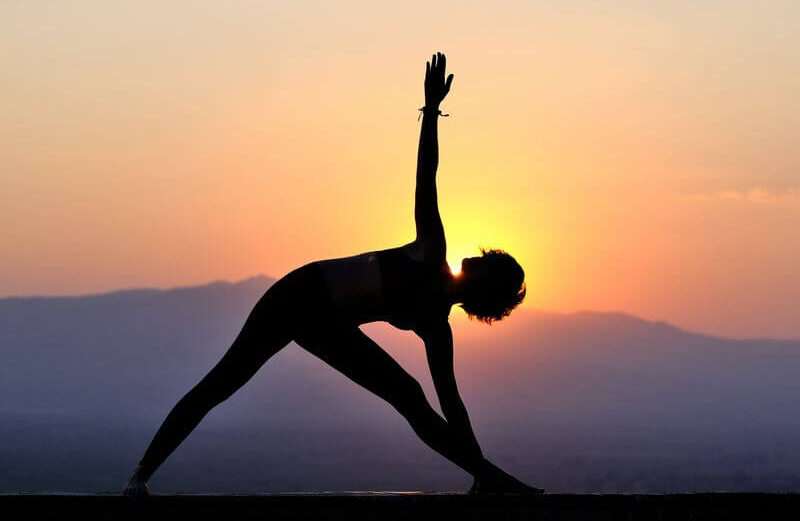
by Tirtha Acharya | Sep 27, 2024 | Yoga
With a suitable weather and natural resources, Nepal serves as a cradle for yoga and meditation. Many of the authentic yoga practices taught worldwide today has the traces and roots back to the Indian subcontinent, including Nepal.
Nepal has breathtaking Himalayas, landscapes which provides as an ideal backdrop for yoga practices. One of the biggest yoga practice “Vipasana” started on the principles of Lord Budha. Vipasana has reached overall world showcasing the yoga practices that has the originality of Nepal’s meditation journey.
Various meditators from around the world in today’s and previous history consider Nepal as the best destination for yoga. The reason behind Nepal being the best destination for authentic yoga is the practice that has been going for ages. Monks, Gurus, Rishis have been involved in yoga and meditation for the various years and practiced alongside.
Choosing the correct put for your authentic yoga travel is pivotal for extending your hone and accomplishing individual development. Nepal Yoga Home stands out as a head goal for yoga devotees looking for a genuine and transformative encounter.
Here’s why Nepal Yoga Home is the most excellent choice for authentic yoga:
- Certified and Experienced teachers: Our teaches are exceedingly prepared in conventional yoga home and have broad encounter instructing different styles, counting Hatha, Vinyasa, Ashtanga, and helpful yoga. They bring a riches of information and a deep understanding of yoga logic to each course.
- Personalized Consideration: Our little course sizes guarantee that you just get person consideration and personalized direction, permitting you to refine and accomplish your individual objectives.
- Encompassing Approach: Comprehensive Educational modules: We offer a well-rounded yoga encounter that coordinating asanas (stances), pranayama (breathwork), contemplation, and yoga reasoning. This approach guarantees an exhaustive understanding authentic yoga and its benefits.
- Centered on Logic: Our programs emphasize not only physical but moreover the philosophical and thoughtful viewpoints of authentic yoga, making a difference you interface with the more profound measurements of your home.
- Common Magnificence: Found within the heart of the Himalayas, Nepal Yoga Home offers breathtaking sees and a quiet environment that improves your yoga home. The common excellence of Nepal gives a peaceful background for reflection and internal development.
- Tranquil Climate: The quiet and profoundly charged climate of Nepal cultivates a sense of calm and center, making it a perfect setting for developing mental clarity.
- Social Improvement: Immersive Involvement: Being in Nepal allows you to submerge yourself in the neighborhood culture and otherworldly conventions. This social association provides authentic yoga practice following the ancient roots.
- Custom fitted Programs: We offer a run of programs outlined to cater to diverse levels of involvement and individual goals. Whether you are a apprentice or an progressed practitioner, our programs are custom-made to meet your needs.
- Wellness: In expansion to authentic yoga, we center on in general well-being, counting nourishment, mindfulness, and self-care. Our approach guarantees merely get comprehensive back for your physical, mental, and enthusiastic wellbeing.
- Inviting Air: Nepal Yoga Home fosters a warm and comprehensive community where you’ll be able interface with like-minded people. The strong environment energizes individual development and makes a sense of belonging.
- Continuous Direction: Our dedicated staff and teaches are continuously available to supply direction and back, guaranteeing that you simply have the assets you wish to succeed in your physical and mental health.
- Regard for Convention: We are committed to protecting the realness of conventional yoga. Our programs honor the antiquated roots of authentic yoga whereas making them available to advanced professionals. We follow to tall moral guidelines in our instructing and operations, guaranteeing that you get veritable and conscious instruction.
- Individual Development: Our programs are outlined to assist you, pick up modern bits of knowledge, and accomplish individual development. The combination of experienced instruction, peaceful setting, and holistic approach makes a transformative encounter.
- Long-Term Benefits: The aptitudes and insights picked up at Nepal Yoga Home amplify past your time with us, contributing to enduring enhancements in your physical wellbeing, mental clarity, and by and large well-being.
Start Your Yoga Travel with Nepal Yoga Home
Nepal Yoga Home offers an unparalleled environment for authentic yoga, combining master instruction, a peaceful setting, personalized consideration, and a commitment to realness. Whether you’re looking for to develop your yoga habits, investigate yoga logic, or simply enjoy a reviving involvement, Nepal Yoga Home provides the perfect setting for your travel.
We offer various retreats that combine yoga with other activities like trekking, meditation, and detoxification. For those interested in teaching, the Yoga Teacher Training (YTT) programs provide a comprehensive curriculum that equips you with the skills and knowledge to guide others on their yoga journey.
Completion of this YTT course, one is eligible to register in any of the yoga institute and yoga center and can teach yoga among various yoga enthusiast helping them in their holistic and personal transformation that leads one to the new standards and practice of life, with the authentic yoga practice that was done in Nepal Yoga Home.
Prepared to set out on a transformative yoga encounter?
Visit our site or contact our group to know more about our programs and save your spot. Connect us at Nepal Yoga Home and discover why we are the best goal for your authentic yoga journey
For more blogs visit on our Nepal Yoga Home blog section.

by Tirtha Acharya | Sep 21, 2024 | Yoga
Wellness Retreat in Nepal
Investigate the beat 5 wellness retreat programs in Nepal advertised by Nepal Yoga Home. Nepal offers a few of the foremost profound wellness retreats within the world, much obliged to its magnificent Himalayan scenes and deep-rooted otherworldly legacy. For those in look of a reestablishing getaway that caters to both physical and otherworldly needs, Nepal Yoga Home offers a handpicked cluster of top-notch wellness retreat offerings. For people looking to encounter the broad points of interest of Ayurvedic treatment, the Ayurveda Retreat gives an in-depth investigation of this conventional information of life.
Custom fitted wellness programs, such as Panchakarma detoxification, home grown cures, and restorative rubs, point to advance adjust, bolster assimilation, and boost generally well-being. The Ayurveda and Yoga Combined Retreat gives a mix of yoga’s physical benefits with Ayurveda’s restoring capacities, giving members the leading of both universes. This comprehensive strategy consolidates regular yoga hones with personalized Ayurvedic medications to help in cleansing and maintaining energy equilibrium, advertising a complete way to revive and upgrade one’s wellbeing.
Here could be a list of the most excellent five retreats that offer reestablishment, mending, and motivation:
1. Yoga Sanctuary
A yoga retreat at Nepal Yoga Home gives a safe house for those looking for to improve their hone and find inward tranquility. Found with the breathtaking Himalayas as its scenery, this getaway highlights every day yoga classes pointed at moving forward adaptability, quality, and mental focus. You may get custom-made direction to coordinate your ability level and targets, investigating distinctive sorts of yoga like Hatha, Vinyasa, remedial, and yin. The quiet environment, beside guided contemplation procedures, offer a comprehensive strategy for achieving harmony and calmness.
Along with yoga sessions each day, the wellness retreat joins guided contemplation exercises to create clear considering and enthusiastic solidness. The quiet environment of the retreat, beside the knowledge of experienced instructors, cultivates a space for upgrading your abilities and encountering genuine calmness.
2. Yoga Retreat
Yoga Retreat at Nepal Yoga Home isn’t almost classes; it offers a holistic experience to care for your intellect, body, and soul. Retreat centered on Ayurveda practices. Ayurveda at Nepal Yoga Home gives a careful investigation of old conventions for people trying to find an encompassing approach to wellness. Ayurveda, an ancient therapeutic framework from India, points to adjust the body’s energies by utilizing slim down, way of life, and common medications. This retreat offers individualized meetings with learned Ayurvedic professionals, who will make a customized program providing you the best wellness retreat. Enjoy in mending cures like Panchakarma, home grown kneads, and detox medicines that upgrade generally wellbeing and energy.
Furthermore, the retreat gives help in Ayurvedic dietary and lifestyle recommendations, in expansion to these treatments. You may be instructed how to incorporate nutritious nourishments and plans into your everyday schedule, guaranteeing merely proceed to encounter the focal points of the retreat indeed after you go back Home. Grasped by the peaceful splendor of the Himalayas, the Ayurveda Retreat at Nepal Yoga Home offers both physical revitalization and mental and otherworldly food. This comprehensive strategy empowers you to reestablish an association with yourself, accomplish a profound feeling of wellness, and adopt a way of life of balance and peace.
3. Combining Ayurveda and Yoga
Discover the perfect blend of Ayurveda and yoga on a bound together at Nepal Yoga Home. Combining these two compelling procedures offers an encompassing method for promoting mending and taking care of oneself providing the wellness retreat that you were looking for. The arrange includes day by day yoga classes to improve flexibility and mental clarity, as well as Ayurvedic treatments pointed at detoxifying and bringing adjust. This retreat gives customized wellness plans and master counsel, combining physical postures, breathing works out, and Ayurvedic medicines to reestablish your general well-being.
You will moreover get different Ayurvedic medications that help in detoxification and keeping up adjust whereas partaking within the yoga sessions. A few of the medicines offered are Panchakarma, a conventional method for detoxifying the body, and diverse home grown kneads that point to bring back adjust and vitality. The retreat’s Ayurvedic focus highlights a tailor-made wellness retreat program planned by gifted specialists to target your person wellbeing issues and targets. Beneath the guidance of experienced instructors, you’ll pick up profitable information on how to join Ayurvedic standards into your daily life
4. Reiki and adjusting Chakras
Discover the potential of vitality recuperating through the Reiki and Chakra Healing retreat at Nepal Yoga Home. Reiki, an old Japanese hone, at the side Chakra mending, works on harmonizing the vitality focuses within the body to enhance both physical and enthusiastic wellbeing. This getaway offers Reiki sessions for clearing vitality blockages and restoring concordance, together with specific Chakra mending procedures to adjust and adjust your vitality centers. Through personalized sessions and guided reflections, you may experience profound unwinding and revitalization, driving to a more grounded bond with your inward self.
Reiki, an imperative perspective of this retreat, could be a mending procedure from Japan. Amid Reiki sessions, talented professionals coordinate recuperating vitality to expel impediments and bring back balance inside your body. This tender strategy, which is not invasive, empowers significant unwinding, reduces push, and helps in in general mending by balancing your energy fields. Specialized Chakra healing hones are provided nearby Reiki sessions to target the body’s seven vitality centers. This wellness retreat offers customized techniques to harmonize and align the Chakras, which are connected to distinctive angles of physical and enthusiastic well-being. Hones like guided meditations, energy work, and visualization works out help in discharging stuck vitality and bringing back balance.
5. Singing Bowl
Immerse yourself in the calming sound treatment vibrations amid the Singing Bowl Mending retreat. This extraordinary retreat employments Tibetan singing bowls to promote deep unwinding and health benefits. The resonant vibrations of the bowls harmonize along with your body’s vitality areas, supporting in push help and enthusiastic equilibrium with the perfect wellness retreat. Every session is particularly made to move forward your reflection involvement and encourage feelings of calmness and internal agreement. Paired with mindfulness works out, this retreat gives a profoundly rejuvenating opportunity that cares for the body and mind.
The vibrations from the singing bowl impact 70% of our water component, actuating a quick state of unwinding in both body and intellect. A singing bowl can help in sound treatment for overseeing outrage, recuperating feelings, and tending to different ailments and issues. The singing bowl produces an vitality that can profoundly affect the body, mind, and soul. Using singing bowls can harmonize the left and right sides of the brain by adjusting the Ida and Pingala vitality pathways. Balancing both vitality pathways is crucial for actuating the Susumna nadi. Going to singing bowl classes in Nepal can assist you accomplish a more profound sense of peace, otherworldly existence, and stir the Susumna nadi (vitality channel).
What are the reasons for selecting Nepal Yoga Home?
Nepal Yoga Home is known for being a beat spot for wellness retreat, giving gifted course, customized plans, and a idealize environment for personal growth and recovery. Whether you are inquisitive about the physical exercises of yoga, the recuperating preferences of Ayurveda, or the spiritual elements of vitality and sound treatment, Nepal Yoga Home offers a complete and life-changing travel custom fitted to your personal requirements and objectives.
Are you prepared to improve your in general health and wellness?
Begin a self-care and revival travel with beat wellness retreat programs in Nepal. Each retreat at Nepal Yoga Home points to give profound bits of knowledge, total mending, and a more grounded bond with oneself. Save your retreat presently and find the life-changing benefits of well-being within the quiet view of Nepal.To get more data or to secure your place, please go to our site or get in touch with our group. Let us lead you on a travel towards moved forward health and well-being through our carefully created wellness retreat programs. Your way to accomplishing extreme wellbeing begins at Nepal Yoga Home
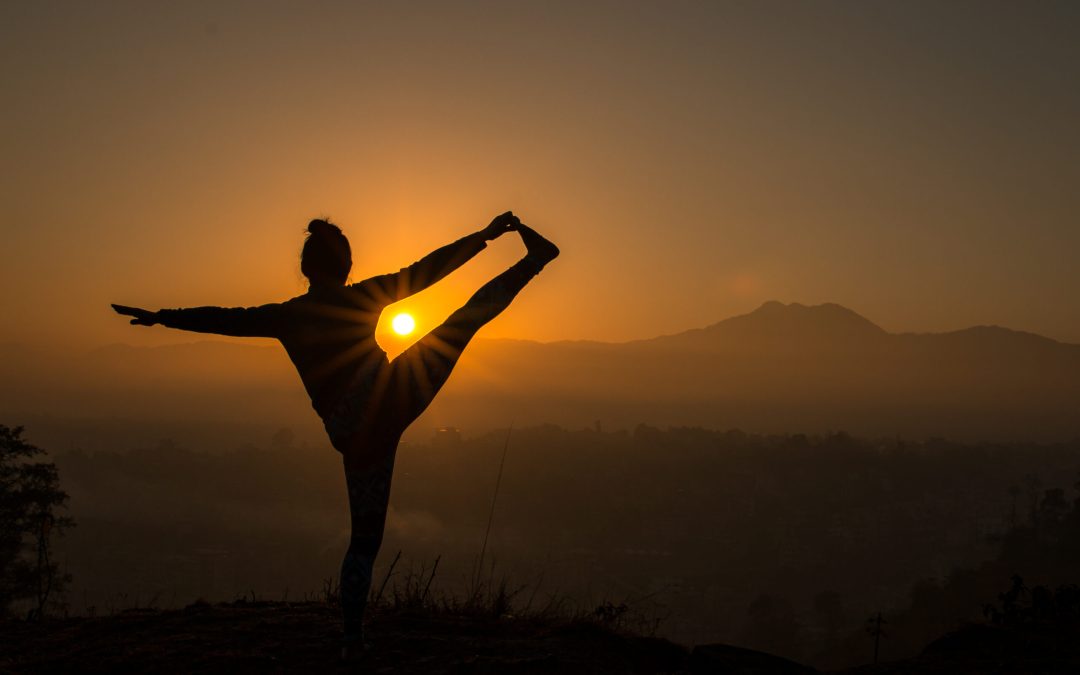
by Tirtha Acharya | Sep 14, 2024 | Yoga
Trekking and Yoga: Balance for Mind and Body
Trekking and Yoga both are one of the beneficial activity to keep one physically and mentally fit. Trekking provides you physical strength whereas Yoga gives you mental clarity and strength. Combining Trekking and Yoga can give you numerous benefits helping you to be at your best for anything that occurs.
Trekking is a form of outdoor activity that involves walking long distances, usually on trails or paths in natural environments like mountains, forests, or remote areas. Unlike hiking, which can be done on well-maintained trails, trekking often involves more challenging terrain and can last for several days, requiring participants to carry supplies like food, water, and camping gear.
Yoga is a holistic practice that originated in ancient India, combining physical postures, breathing exercises, meditation, and ethical principles to promote physical, mental, and spiritual well-being. The word “yoga” comes from the Sanskrit word “yuj,” which means to unite or join, symbolizing the union of body, mind, and spirit.
When assessing how to best utilize your time for individual development and wellbeing, trekking and yoga stand out as two particular however complementary exercises. Each offers special benefits that cater to diverse perspectives of physical and mental wellbeing. Here’s an in-depth see at both to assist you make an educated choice.
Trekking: A Travel Through Nature and Self
- Physical Challenges and Benefit Cardiovascular Wellbeing
Trekking hoists your heart rate, advancing cardiovascular wellness. The shifting power, from tender slants to soak climbs, offer a vigorous workout that upgrades heart and lung capacity.
- Muscle Engagement
The shifted territory works numerous muscle bunches, from your legs and center to your arms and back. This comprehensive engagement builds quality and continuance whereas progressing in general muscle tone.
- Mental and Passionate Benefits
Being encompassed by nature’s tranquility can altogether decrease stretch levels. The sights, sounds, and quietness of normal scenes advance unwinding and mental clarity. Sense of Accomplishment: Completing a journey, particularly challenging courses, cultivates a solid sense of achievement and boosts self-esteem. It too gives profitable time absent from every day stressors, contributing to mental revival.
- Social and Natural Association
Trekking courses in Nepal regularly pass through inaccessible towns where you’ll interact with nearby communities, encountering their traditions, conventions, and neighborliness.
- Natural Mindfulness
Submersion in nature increases your appreciation for the environment, empowering feasible homes and a more noteworthy understanding of environmental conservation.
- Challenges and Planning Physical Requests
Trekking requires physical stamina and continuance. Arrangement may include conditioning your body through work out and acclimatization to higher heights.
- Climate and Territory
Depending on the journey, climate conditions and tough territory can show challenges. Appropriate equip and arrangement are fundamental for security and consolation.
Yoga: Internal Concordance and Physical Wellness
- Comprehensive Wellbeing Benefits Adaptability and Quality
Yoga stances (asanas) improve adaptability, construct quality, and make strides adjust. Normal home can too address muscle awkward nature and advance way better pose.
- Mindfulness and Unwinding
Yoga joins mindfulness and breathing procedures (pranayama) that decrease push and upgrade passionate wellbeing. The reflective angles of yoga cultivate a state of calm and clarity.
- Mental Stretch
Yoga’s center on breath control and unwinding helps manage stretch and uneasiness. It can also aid in passionate control and mental versatility. Self-awareness through homes such as reflection and self-reflection, yoga develops a more profound association with oneself, advancing individual development and self-awareness.
- Flexibility and Availability Flexibility
Yoga can be practiced in different settings, from studios to open air situations, making it open notwithstanding of area. Its versatility permits you to tailor your home to your needs and inclinations. Customizable Home: Yoga offers a run of styles and force, from delicate therapeutic homes to incredible control yoga. This flexibility guarantees that you simply can find a home that adjusts together with your objectives and physical condition.
- Complementing Physical Exercises
Yoga can upgrade your trekking and yoga involvement by moving forward adaptability and supporting in recuperation. Consolidating yoga into your schedule can offer assistance anticipate wounds and progress by and large physical execution.
- Adjusting Way of life
Standard yoga home can offer adjust to a physically requesting way of life, giving mental and physical unwinding and supporting long-term fitness
Finding the Adjust: Trekking and Yoga Together Combining
Trekking and yoga can offer an encompassing approach to wellness, leveraging the qualities of both exercises:
Upgraded Physical Wellness: Yoga can progress adaptability and adjust, making trekking more comfortable and lessening the chance of damage. Trekking and yoga gives cardiovascular and solid challenges that complement the benefits of yoga.
Coordinates Well-being: Whereas trekking and yoga offers stretch alleviation and a sense of enterprise, progressing mental clarity and physical support. Together, they back a adjusted approach to wellbeing Versatile Way of life: Whether you’re trekking through the Himalayas or practicing yoga at home, coordination both into your routine can lead to a more satisfying and adjusted way of life.
We offer programs that consolidate both trekking and yoga to supply a comprehensive wellness encounter. Whether you select to set out on a trekking experience, plunge into a yoga home, or combine both, each way offers one of a kind rewards for your body, intellect, and soul. For more data on our trekking and yoga programs, visit our site or reach out to our team. Let us assist you find the idealize adjust for your travel to ideal wellbeing
For more blogs visit on our Nepal Yoga Home blog section.
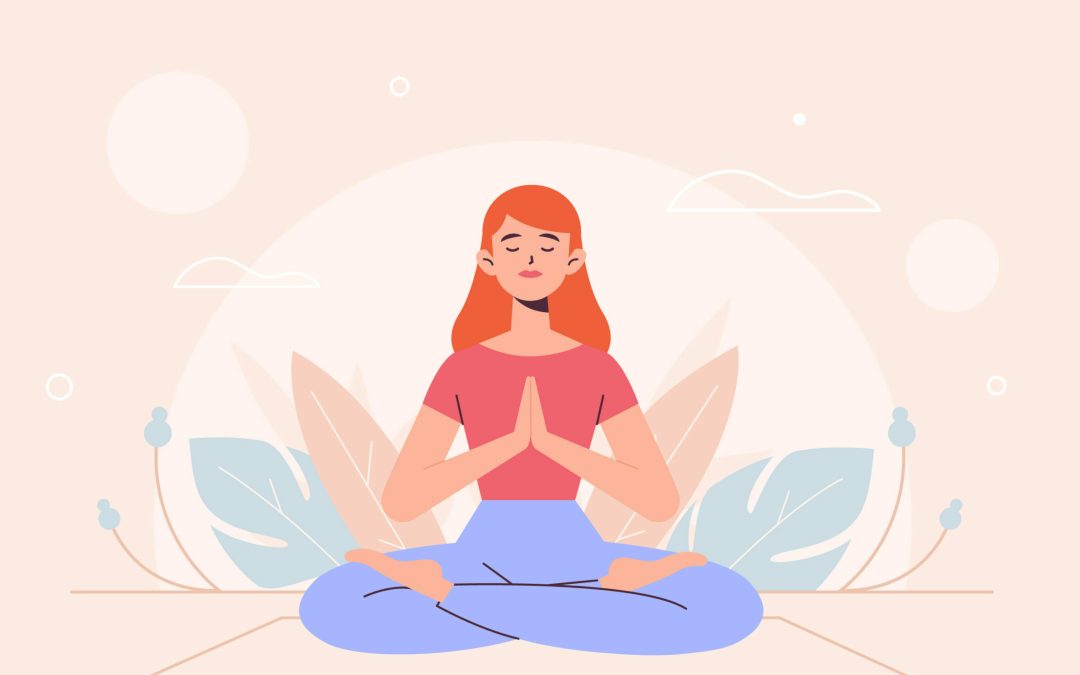
by Tirtha Acharya | Aug 31, 2024 | Yoga
Shambhavi Kriya: A Path to Inner Peace and Focus
The modern world has provided us with many advantages but one of the drawbacks that it has bestowed us with is stress. Stress makes day-to-day life difficult and along with distractions, it’s hard to focus on the task at hand. Many people struggle with this problem and search for solutions to fix it. Some are successful in solving it while others are not.
However, there exists a method that aims to solve this dilemma. It’s known as shambhavi kriya and it offers a roadmap for inner transformation and self-discovery. In this article, we’ll dive deeper into the benefits of shambhavi kriya. Further, we’ll explore how it can help you unlock your inner potential.
What is Shambhavi Kriya?
Shambhavi kriya is a special yoga practice that helps you feel calm and focused. It combines breath control, meditation, and other techniques. One of the common techniques that it follows is the energy activation technique. This practice finds its roots in ancient yogic tradition and aims to maintain harmony between the mind, body, and spirit. When all these elements are balanced, you’ll experience inner peace and balance.
Through consistent practice of shambhavi kriya, you can access a deeper level of consciousness and inner potential. This is ultimately useful for personal growth and transformation.
Benefits of Shambhavi Kriya:
The common benefits of shambhavi kriya are outlined below:
- Stress Reduction: One of the most important benefits of Shambhavi Kriya is its ability to reduce stress and promote relaxation. Through engaging in deep, conscious breathing and mindfulness practices, you can calm the nervous system and experience peace
- Improved Mental Clarity and Focus: Shambhavi Kriya enhances mental clarity and focus by improving concentration and sharpening the mind. With regular practice, you learn to detach from distracting thoughts and bring a state of focused awareness. It enables you to approach tasks with greater clarity.
- Enhanced Energy: Shambhavi Kriya activates the body’s energy centers which promotes overall well-being. By channeling prana, you can experience increased energy levels and a greater sense of aliveness.
- Emotional Healing and Balance: Shambhavi Kriya supports emotional healing and balance by releasing stored emotional tension and trauma. Through the practice of deep breathing and mindfulness, you can learn to observe and accept your emotions without judgment.
- Spiritual Awakening: Shambhavi Kriya facilitates spiritual awakening and self-realization by connecting you with the divine presence within. With regular practice, you can experience a profound state of inner stillness.
How to Practice Shambhavi Kriya:
Here’s a step-by-step guide to practice Shambhavi Kriya:
- Find a quiet and comfortable space without any disturbances.
- Sit comfortably with your spine erect and your hands resting on your knees in chin mudra (thumb and index finger touching).
- Close your eyes and take a few deep breaths to calm yourself.
- Commence to engage in Ujjayi pranayama or victorious breath. Constrict the back of your throat slightly as you breathe through your nose. This produces a soft, whispering sound like the ocean waves.
- Bring your awareness to the space between your eyebrows.
- With each inhalation, picture a radiant light or energy rising from the base of your spine to between your eyebrows.
- As you exhale, visualize the energy heading back down to the base of your spine.
- Continue this rhythmic breathing and visualization for several minutes. Allow yourself time to relax and unwind.
As we conclude our journey of exploring Shambhavi kriya, I invite you to walk on this transformative journey. It’s not just a simple practice, but it’s a way of life. Whether you’re seeking relief from stress, clarity of mind, or spiritual awakening, Shambhavi kriya is the best tool for unlocking your true potential. Begin your practice today and feel the change within.
For more blogs visit on our Nepal Yoga Home blog section.
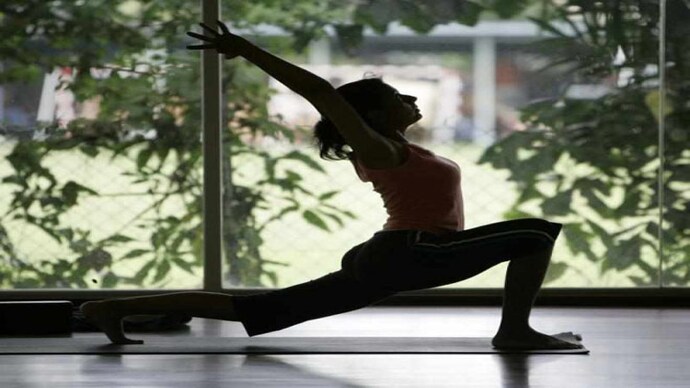
by Tirtha Acharya | Aug 26, 2024 | Yoga
The human life is filled with numerous moments of joy and some instances of sadness. One of the health conditions that make life painful is sciatica. Living with it is quite difficult and it hinders in performing daily activities. Some people are constantly searching for relief from this painful condition. Luckily, there’s hope as yoga for sciatica is one of the alternatives that patients can use. Through this blog, we shall take a look at how yoga can reduce sciatica symptoms and contribute to a healthy life.
What is sciatica?
Sciatica is a medical condition where one feels pain or a tingling session which starts from the lower back and moves to the leg. It occurs when something places pressure on or irritates the sciatic nerve which is also the longest nerve in the human body. Some common causes include herniated discs, injury, or even sitting in one position for too long. It leads to pain, tingling, and weakness in the affected leg.
Symptoms of sciatica
Some common symptoms of sciatica are as follows:
- Pain that radiates from the lower back through the buttock and down the back of one leg
- Numbness or tingling sensation along the path of the sciatic nerve
- Weakness in the affected leg which makes it difficult to move
- Discomfort or pain when sitting or standing for prolonged periods
- Pain with certain movements like bending forward, twisting, or coughing
- Burning sensation in the affected leg
Yoga offers numerous benefits for relieving sciatica pain and stress reduction. Through gentle stretching and strengthening of the muscles that surround the sciatic nerve, yoga helps to reduce pain. In addition, it also helps in improving flexibility in the spine and hips. Focusing on your breath and practicing mindfulness, further helps to alleviate sciatica symptoms.
Benefits of yoga for sciatica
Some common benefits are:
- Reduces pressure on the sciatic nerve.
- Promotes flexibility and range of motion in the spine and hips.
- Strengthens muscles supporting the lower back and pelvis.
- Reduces inflammation and pain associated with sciatica.
- Enhances relaxation and reduces stress levels.
- Enhances circulation, delivering oxygen and nutrients to affected areas.
- Improves posture and body awareness.
Yoga Poses for Sciatica Relief
Here are some yoga poses that you can do for sciatica relief:
- Downward-Facing Dog: This pose stretches the hamstrings, calves, and back. It relieves tension in the spine and hips.
- Pigeon Pose: This pose targets the hip flexors, glutes and provides deep relief for sciatica pain.
- Cat-Cow Pose: This spinal movement enhances flexibility and circulation in the spine. It reduces compression on the sciatic nerve.
- Seated Forward Fold: Seated forward fold stretches the hamstrings and lower back,
Mindfulness and Breath work Techniques:
While practicing yoga for sciatica relief, you mustn’t forget the breathing part. By incorporating breathing techniques into your schedule, you’ll be able to experience greater benefits. Also, be aware of the present moment. By focusing on the present sensation in your body, you can allow the tension to melt away.
Lifestyle Tips for Managing Sciatica:
If you want to further manage sciatica, then you need to incorporate certain modifications in your lifestyle. For starters, you need to maintain a good posture especially when sitting and standing for longer durations. You shall also need to avoid activities that cause physical pain. Incorporate gentle exercises like swimming and walking into your routine to improve flexibility and strengthen the muscles.
Incorporating yoga into your daily routine can be a game-changer in dealing with sciatica pain and improving overall well-being. Through practicing gentle yoga poses and making positive lifestyle changes, you can find relief from sciatica symptoms. Remember to listen to your body, honor its limitations, and seek guidance from a healthcare professional if needed.
For more blogs visit on our Nepal Yoga Home blog section.
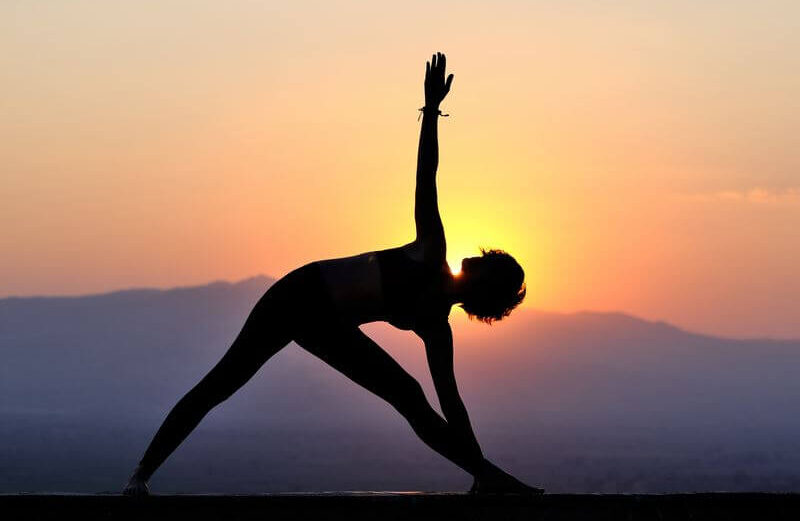
by Tirtha Acharya | Aug 23, 2024 | Yoga
Introduction: Embarking on the Journey of Hatha Yoga Essentials
Welcome to the profound world of Hatha Yoga Essentials, where the ancient wisdom of yoga meets the modern quest for holistic wellness. In this comprehensive guide, we invite you to embark on a transformative journey of self-discovery, exploring the foundational aspects of Hatha Yoga and its essential principles. As we delve into the significance of Hatha Yoga Essentials, we will uncover its transformative power in achieving harmony of mind, body, and spirit. Join us as we unravel the timeless teachings of Hatha Yoga Essentials and embrace a life of balance, vitality, and inner peace.
Understanding Hatha Yoga Essentials: Foundations of Holistic Wellness
Hatha Yoga Essentials serves as the bedrock of yoga practice, providing a solid foundation for physical, mental, and emotional well-being. Rooted in ancient traditions, Hatha Yoga Essentials forms the basis of various yoga styles, including Ashtanga and Vinyasa, offering practitioners a comprehensive approach to holistic wellness. Explore the core philosophy of Hatha Yoga Essentials, which emphasizes the union of opposites and the cultivation of inner awareness, guiding individuals on a journey of self-realization and transformation.
The Mind-Body Connection in Hatha Yoga Essentials: Tuning into Inner Wisdom
Delve into the profound connection between the body and mind in Hatha Yoga Essentials, where each posture becomes a gateway to self-discovery and inner alignment. Through prolonged asana practice, practitioners develop a heightened sense of self-awareness, learning to tune into their physical sensations and emotional responses. By recognizing the subtle cues of the body, individuals gain insight into their holistic well-being, fostering a deeper connection between mind, body, and spirit.
Harnessing the Power of Breath with Hatha Yoga Essentials: The Art of Pranayama
Unlock the transformative potential of pranayama, or breathing exercises, in Hatha Yoga Essentials, where each breath becomes a vehicle for inner exploration and healing. Discover a myriad of pranayama techniques aimed at enhancing breath awareness, improving lung capacity, and calming the mind. Experience the profound effects of conscious breathing on stress reduction, emotional regulation, and overall vitality, as you harness the power of the breath to cultivate inner peace and equilibrium.
Balancing Breath and Movement in Hatha Yoga Essentials: Flowing with Grace
Explore the dynamic interplay between breath and movement in Hatha Yoga Essentials sequences, where each posture flows seamlessly into the next, guided by the rhythm of the breath. Learn to synchronize your breath with mindful movement, enhancing the flow of energy throughout the body and promoting balance and harmony within. Infuse each posture with intention and breath awareness, as you embark on a journey of self-expression and self-discovery through the practice of Hatha Yoga Essentials.
Cultivating Inner Harmony through Hatha Yoga Essentials: Nurturing the Soul
Experience the transformative journey of self-discovery and inner alignment through Hatha Yoga Essentials practice, where each moment becomes an opportunity for growth and healing. Discover the therapeutic benefits of Hatha Yoga Essentials in reducing anxiety, alleviating tension, and promoting relaxation, as you cultivate a sense of inner peace and equilibrium. Embrace the practice of Hatha Yoga Essentials as a sacred ritual, nurturing your body, mind, and spirit with compassion and mindfulness.
Progressing in Practice with Hatha Yoga Essentials: A Lifelong Journey of Growth
Empower yourself to progress in your Hatha Yoga Essentials journey with confidence and mindfulness, as you explore advanced asanas and pranayama techniques under the guidance of experienced instructors. Embrace the lifelong journey of self-exploration and growth through dedicated Hatha Yoga Essentials practice, where each step brings you closer to your true essence and highest potential. With dedication and perseverance, may you continue to deepen your understanding of Hatha Yoga Essentials and embrace a life of balance, vitality, and inner peace.
Conclusion: Embracing Hatha Yoga Essentials
As you conclude this journey into the heart of Hatha Yoga Essentials, may you carry with you a newfound sense of purpose and clarity. By embracing the foundational principles of breath, movement, and mindfulness, you have embarked on a path of self-discovery and transformation, where each breath becomes a reminder of your inherent wholeness and vitality. As you continue to cultivate balance, vitality, and inner harmony in your life, may you find solace in the timeless wisdom of Hatha Yoga Essentials, guiding you on a journey of awakening and empowerment. Embrace the practice of Hatha Yoga Essentials with an open heart and a receptive mind, and may you experience the profound joy and fulfillment that comes from aligning with your truest self.
For more blogs visit on our Nepal Yoga Home blog section.






